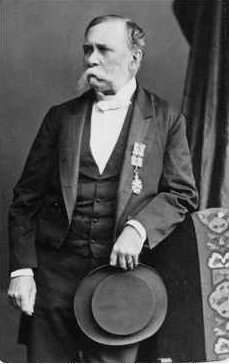Related Research Articles

The Legislative Council, or upper house, is one of the two chambers of the Parliament of South Australia. Its central purpose is to act as a house of review for legislation passed through the lower house, the House of Assembly. It sits in Parliament House in the state capital, Adelaide.

The House of Assembly, or lower house, is one of the two chambers of the Parliament of South Australia. The other is the Legislative Council. It sits in Parliament House in the state capital, Adelaide.

The Parliament of South Australia is the bicameral legislature of the Australian state of South Australia. It consists of the 47-seat House of Assembly and the 22-seat Legislative Council. General elections are held every 4 years, with all of the lower house and half of the upper house filled at each election. It follows a Westminster system of parliamentary government with the executive branch required to both sit in parliament and hold the confidence of the House of Assembly. The parliament is based at Parliament House on North Terrace in the state capital of Adelaide.

Francis Stacker Dutton CMG was the seventh Premier of South Australia, serving twice, firstly in 1863 and again in 1865.

John Dunn Sr. was a flour miller in the early days of the colony of South Australia; a parliamentarian, philanthropist and a prominent citizen of Mount Barker, South Australia.
This is a list of members of the South Australian Legislative Council from 1851 to 1855. Sixteen members were elected at the 1851 election with terms expiring in 1854. The four official members and four non-official members were nominated by the Governor on behalf of the Crown. Voting was voluntary and restricted to land-holding males. The first meeting was held on 28 August 1851 at the newly completed courthouse on Victoria Square. This council was dissolved by proclamation on 15 August 1855, and elections held for six city seats on 20 September and seven country seats on 21 September.
This is a list of members of the South Australian Legislative Council from 1855 to 1857. Sixteen members were elected at the 1855 election with terms due to expire in 1858. The four Official Nominees and four Non-Official Nominees were appointed by the Governor on behalf of the Crown. Voting was voluntary and restricted to land-holding males. This Council formulated a State Constitution and was prorogued to make way for the bicameral system brought about by this Constitution.

Anthony Forster was a politician, financier and newspaper owner/editor in colonial South Australia.

William Knox Simms was a brewer, businessman and politician in the early days of South Australia.
This is a list of members of the South Australian Legislative Council from 1861 to 1865.
This is a list of members of the South Australian Legislative Council from 1865 to 1869.
This is a list of members of the South Australian Legislative Council from 1869 to 1873.
This is a list of members of the South Australian Legislative Council from 1873 to 1877.
This is a list of members of the South Australian Legislative Council from 1877 to 1881.
This is a list of members of the South Australian Legislative Council from 1881 to 1885.
This is a list of members of the South Australian Legislative Council from 1900 to 1902.
The Constitution Act Amendment Act 1901, No. 779 of 1901, long title "An Act to amend the Constitution", was an act which amended the Constitution of South Australia. Its effect was to reduce the size of the Parliament of South Australia following the Federation of Australia.
Central District was an electoral district for the Legislative Council of South Australia from 1882 until 1912. Prior to the passing of the Constitution Act Further Amendment Act 1881, the Legislative Council had been 18 members elected by people from across the entire Province.
Central District No. 1 was an electoral district for the South Australian Legislative Council from 1913 until 1975. It was created by the Constitution Act Further Amendment Act 1913, which divided the Central District into two districts, each to elect four members. The size of the Legislative Council was to remain at 18 until the next general election, and increase to 20 by adding a new member for each of the two new districts. From its creation until the next general election, Central District No. 1 comprised the extant Assembly districts of Adelaide and Port Adelaide. The act also redrew the Assembly electoral districts from the next election. From then, Central District No. 1 would comprise the new Assembly districts of Adelaide, North Adelaide, Port Adelaide and West Torrens.
Central District No. 2 was an electoral district for the South Australian Legislative Council from 1913 until 1975. It was created by the Constitution Act Further Amendment Act 1913, which divided the Central District into two districts, each to elect four members. The size of the Legislative Council was to remain at 18 until the next general election, and increase to 20 by adding a new member for each of the two new districts. From its creation until the next general election, Central District No. 2 comprised the extant Assembly electoral district of Torrens. The act also redrew the Assembly electoral districts from the next election. From then, Central District No. 2 would comprise the new Assembly districts of Sturt and East Torrens.
References
- ↑ "Colonial Constitutions". South Australian Register . Adelaide. 16 March 1857. p. 2. Retrieved 28 August 2014– via National Library of Australia.
- ↑ "The New Parliament". South Australian Register . Adelaide. 26 March 1857. p. 2. Retrieved 27 August 2014– via National Library of Australia.
- ↑ "Our First Parliament". The Advertiser . Adelaide. 8 March 1930. p. 15. Retrieved 28 August 2014– via National Library of Australia.
